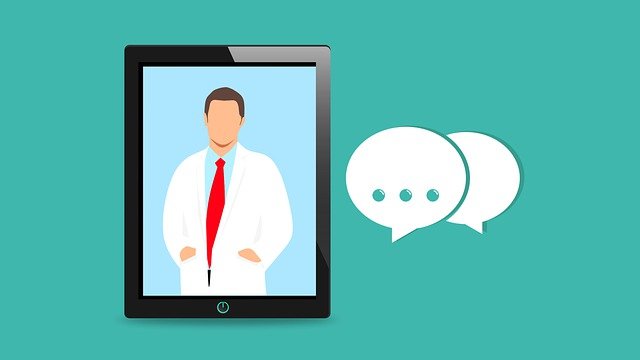
Healthcare providers will ask questions about patients' symptoms as well as the family members. The doctor may also ask for medical records from the patient's primary caregiver. In some cases, an autopsy may be necessary to confirm a diagnosis of Alzheimer's disease. However, many doctors still prefer the traditional methods of diagnosis. This article will examine the differences between each type of test. Let's take an in-depth look at the main three methods used for diagnosing Alzheimer’s disease.
Cerebrospinal fluid examination
A new study looked at the accuracy of cerebrospinal Fluid analysis in the diagnosis and treatment of Alzheimer's Disease. Researchers examined data from 1,016 patients who had lumbar puncture to diagnose mild cognitive impairment and various forms of dementia. The cerebrospinal fluid samples then went to a commercial laboratory to be analyzed. Researchers discovered that bamyloid(1-42) levels were significantly lower among patients with EAD than in patients suffering from LAD.

Memory tests
Recent research has shown that simple memory tests can be used to detect early signs of Alzheimer's disease. A study in the Journal of Neurology found that people who performed poorly on memory tests were more likely to develop beta-amyloid plaque, a biomarker for Alzheimer's. Low scores on memory tests may make it easier to diagnose the disease earlier. Low education levels were one of the limitations of this test. A study like this could help find new treatments for patients suffering from memory loss.
Brain scans
Although there are many types of dementia, doctors will often run brain scans before diagnosing other conditions. These scans help to identify brain dysfunction and changes. A brain scan may reveal certain symptoms such as decreased cerebral cortex size, which could be indicative of Alzheimer's disease. Many types of brain scans are available to help diagnose the disease. Learn more about the advantages and drawbacks of brain scans.
Autopsy
A complete autopsy is required to confirm the diagnosis of Alzheimer's. Even with the most precise diagnostic tests, Alzheimer's symptoms are difficult to diagnose and can even be disguised by other conditions. Blood tests and urine tests help rule out other conditions, such as infection, diabetes, kidney or liver disorder, nutritional deficiencies, or abnormal levels of thyroid hormone. Brain imaging is also often used to rule out tumors, stroke, or blood clots.

Mood assessment
A mood assessment can be used to diagnose Alzheimer's. Current mood assessment measures have been developed and tested in a variety of settings and on a variety of individuals. The AD-RD Mood Scale is an example of a test that measures positive and negative moods. A mood assessment can be used to help caregivers distinguish between Alzheimer’s disease and other forms.
FAQ
What is the difference in the health system and the health care services?
Healthcare systems go beyond providing health services. They include everything that occurs in the overall context for people's lives, including education and employment as well as social security and housing.
Healthcare services on the other hand focus on medical treatment for specific conditions like diabetes, cancer, and mental illness.
They may also refer to the provision of generalist primary care services by community-based practitioners working under the direction of an NHS hospital trust.
What is a public health health system?
The Health System is a collection of all activities that are involved in providing health services to a population. It includes service delivery and financing, regulation, education and training, as well information systems.
What happens if Medicare disappears?
Uninsured Americans will increase. Some employers will terminate employees from their benefits plans. Many seniors will also be paying more for prescription drugs and other services.
Statistics
- For instance, Chinese hospital charges tend toward 50% for drugs, another major percentage for equipment, and a small percentage for healthcare professional fees. (en.wikipedia.org)
- Consuming over 10 percent of [3] (en.wikipedia.org)
- For the most part, that's true—over 80 percent of patients are over the age of 65. (rasmussen.edu)
- The health share of the Gross domestic product (GDP) is expected to continue its upward trend, reaching 19.9 percent of GDP by 2025. (en.wikipedia.org)
- Healthcare Occupations PRINTER-FRIENDLY Employment in healthcare occupations is projected to grow 16 percent from 2020 to 2030, much faster than the average for all occupations, adding about 2.6 million new jobs. (bls.gov)
External Links
How To
What are the Four Health Systems?
The healthcare system includes hospitals, clinics. Insurance providers. Government agencies. Public health officials.
The ultimate goal of the project was to create an infographic that would help people to better understand the US health system.
Here are some key points.
-
The GDP accounts for 17% of healthcare spending, which amounts to $2 trillion annually. That's more than twice the total defense budget!
-
Medical inflation reached 6.6% in 2015, which is more than any other consumer group.
-
On average, Americans spend 9% of their income on health costs.
-
In 2014, over 300 million Americans were uninsured.
-
The Affordable Care Act (ACA) has been signed into law, but it isn't been fully implemented yet. There are still many gaps in coverage.
-
A majority believe that the ACA must be improved.
-
The US spends more money on healthcare than any other country in the world.
-
If every American had access to affordable healthcare, the total cost would decrease by $2.8 trillion annually.
-
Medicare, Medicaid, as well as private insurers, cover 56% all healthcare expenditures.
-
People don't have insurance for three reasons: they can't afford it ($25 Billion), don’t have enough time to search for it ($16.4 Billion), and don’t know about it ($14.7Billion).
-
There are two types, HMO (health maintenance organization), and PPO (preferred providers organization).
-
Private insurance covers many services, including doctors and dentists, prescriptions, and physical therapy.
-
The public programs include hospitalization, outpatient surgery and nursing homes. They also cover long-term care and hospice care.
-
Medicare, a federal program, provides seniors with health insurance. It covers hospital stays, skilled nursing facility stay, and home healthcare visits.
-
Medicaid is a joint federal-state program that provides financial assistance for low-income individuals or families who earn too little to qualify for other benefits.